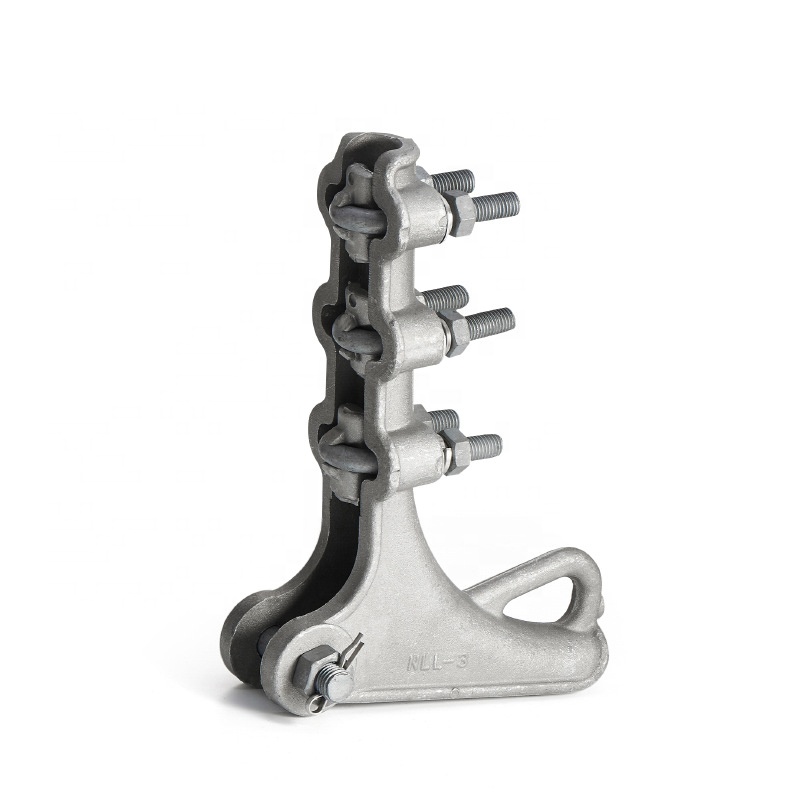Innovative Solutions for Efficient Strain Clamp Applications
Table of Contents
1. Introduction to Strain Clamps
2. Understanding the Role of Strain Clamps in Electrical Systems
3. Key Features of Efficient Strain Clamps
4. Innovative Materials Used in Strain Clamp Production
5. Advanced Design Techniques for Enhanced Performance
6. Best Practices for Installing Strain Clamps
7. Maintenance and Inspection Guidelines
8. Future Trends in Strain Clamp Technology
9. Frequently Asked Questions (FAQs)
10. Conclusion
1. Introduction to Strain Clamps
Strain clamps are essential components in electrical infrastructure, providing critical support and stability to overhead power lines. They are designed to anchor electrical cables, ensuring that they do not sag or come under excessive strain during operation. This article delves into innovative solutions that enhance the efficiency and effectiveness of strain clamping applications.
2. Understanding the Role of Strain Clamps in Electrical Systems
Strain clamps play a pivotal role in maintaining the integrity of electrical systems. By preventing excessive movement and tension, these devices ensure that cables remain securely attached to their supports, thus preventing potential damage. In high-voltage applications, the effectiveness of strain clamps directly impacts the safety and reliability of the entire electrical network.
2.1 Importance in Power Distribution
In power distribution networks, strain clamps help manage the mechanical forces exerted on electrical cables due to wind, ice, and thermal expansion. This is crucial in areas with extreme weather conditions, where the risk of cable failure is heightened.
3. Key Features of Efficient Strain Clamps
To maximize performance, efficient strain clamps should possess several key features:
3.1 High Mechanical Strength
The primary function of strain clamps is to endure high tensile loads without failure. Utilizing advanced materials and engineering techniques can significantly enhance their mechanical strength.
3.2 Resistance to Environmental Factors
Strain clamps must resist corrosion, UV radiation, and extreme temperatures. Innovative coatings and treatments can improve their longevity and reliability in diverse environments.
3.3 Easy Installation and Maintenance
User-friendly designs allow for quicker installations and easier maintenance, reducing downtime and labor costs.
4. Innovative Materials Used in Strain Clamp Production
The development of new materials has led to significant improvements in strain clamp technology. Key innovations include:
4.1 Composite Materials
Composite materials combine the best properties of metals and polymers, offering increased strength while reducing weight. These materials are resistant to corrosion and can perform well in harsh environments.
4.2 New Alloys
Advanced metal alloys provide superior strength and durability compared to traditional materials. Innovations in metallurgy enable the creation of strain clamps that can withstand higher loads without compromising performance.
5. Advanced Design Techniques for Enhanced Performance
Incorporating advanced design techniques can lead to more effective strain clamps:
5.1 Finite Element Analysis (FEA)
FEA allows engineers to simulate the behavior of strain clamps under various conditions, helping to identify potential failure points and optimize designs before production.
5.2 Modular Design
Modular designs facilitate easier upgrades and repairs, allowing for tailored solutions that meet specific project requirements. This approach enhances flexibility and adaptability in various applications.
6. Best Practices for Installing Strain Clamps
Proper installation is crucial to ensure the effectiveness of strain clamps. Here are some best practices:
6.1 Site Assessment
Conduct a thorough site assessment to understand environmental conditions and load requirements. This step ensures the selection of the appropriate strain clamp type.
6.2 Correct Torque Specifications
Using the right torque specs during installation is vital to prevent slippage and ensure that clamps remain secure under load.
7. Maintenance and Inspection Guidelines
Regular maintenance and inspection are essential for the longevity of strain clamps:
7.1 Routine Inspections
Establish a routine inspection schedule to check for signs of wear, corrosion, or damage. Early detection can prevent costly failures.
7.2 Cleaning Protocols
Implement cleaning protocols to remove debris, dirt, and corrosive substances. Keeping strain clamps clean helps maintain their integrity and performance.
8. Future Trends in Strain Clamp Technology
As technology advances, the future of strain clamps looks promising. Key trends include:
8.1 Integration of Smart Technologies
The incorporation of smart sensors within strain clamps can provide real-time monitoring of mechanical tension and environmental conditions, allowing for proactive maintenance.
8.2 Sustainable Manufacturing Practices
There is a growing emphasis on sustainability in manufacturing processes. The development of eco-friendly materials and practices will shape the future of strain clamps.
9. Frequently Asked Questions (FAQs)
9.1 What are strain clamps used for?
Strain clamps are used to secure electrical cables to their supports, preventing excessive movement and damage due to environmental factors.
9.2 How do I choose the right strain clamp?
Consider factors such as cable type, load requirements, and environmental conditions when selecting a strain clamp.
9.3 What materials are commonly used in strain clamps?
Common materials include aluminum, steel, and various composite materials, each offering different benefits.
9.4 How often should strain clamps be inspected?
Regular inspections should be conducted at least annually, with more frequent checks in extreme weather conditions.
9.5 Can strain clamps be reused?
Strain clamps can often be reused if they show no signs of wear or damage. However, thorough inspections are necessary before reuse.
10. Conclusion
Innovative solutions in strain clamp technology are crucial for ensuring the safety and reliability of electrical systems. By understanding the importance of strain clamps, utilizing advanced materials and design techniques, and adhering to best practices for installation and maintenance, we can significantly enhance their efficiency. As the industry continues to evolve, staying informed about the latest trends and technologies will empower us to implement the most effective strain clamp applications in our electrical infrastructure.









